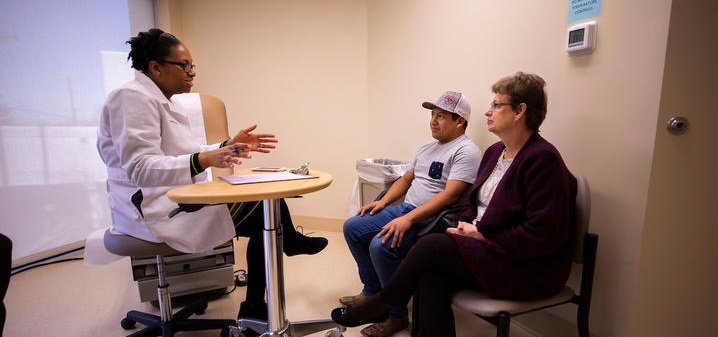Teen with epilepsy finds answers at UK

Nina and Garry Price knew that they wouldn't be able to have children of their own, so when a fellow parishioner at their church returned from a mission trip to Guatemala and testified about the many needy children in the country, they were inspired. The couple adopted their son, Zackary, from Guatemala when he was 22 months old.
Unexplained symptoms
The new parents immediately saw that Zack wasn't hitting developmental milestones, but they were reassured that this was to be expected. Nina became increasingly concerned as Zack continued to lag behind: late to walk, tremors in his hands, a strange spaciness, behind in school. The lack of a family medical history complicated matters even further.
"I just knew something was wrong," she said.
Over the years, multiple appointments with doctors weren't conclusive. Two 30-minute electroencephalograms (EEGs) found nothing, and a heart workup was negative. At one point, doctors diagnosed Zack attention deficit disorder (ADD). Zack was put on one medicine, then two, but he showed no improvement.
Then one day, just shy of his 18th birthday, Zack asked his mother whether she ever had a time when her arm moved against her will. Nina was still pondering that question four days later when Zack's counselor mentioned Zack's involuntary twitches.
Finding a diagnosis
Nina immediately got a referral to the UK Neuromuscular Disorders Clinic. Dr. Ima Ebong, a neurologist at the Kentucky Neuroscience Institute who sees both neuromuscular and epilepsy patients, was in the clinic that day.
"I listened to his story – the abnormal movements, staring into space, developmental delays – and I knew instantly that this is epilepsy," Ebong said.
According to Ebong, only about half of patients with epilepsy will show abnormalities on a 30-minute EEG. This translates to countless numbers of people who are told they don't have epilepsy, when in fact they do.
"It's tragic, really. These people don't get the care they need," Ebong said. "They can end up delayed in school, misdiagnosed with ADHD and even unable to hold a job."
Furthermore, they are often stigmatized, which can lead to isolation and depression.
Ebong immediately ordered a more extensive EEG. Zack was monitored for 48 hours, but Ebong could see after just 24 that Zack was having dozens of seizures.
About 70 percent of seizures are well controlled by medications, and Zack was no exception. After one month of anti-seizure medications, the difference in Zack is night and day.
During a recent appointment, Ebong ticks off her questions. Any more jerky movements? Staring into space? Difficulty following conversations or responding to questions? Each time, the answer was no.
Nina, clearly thrilled with her son's progress, said, "Well, I don't know about Zack, but this mama could do a happy dance!"
Thankful for answers
Zack is not out of the woods. He must be seizure-free for 90 days before he'll be cleared to drive again per Kentucky law. Patients can develop resistance to their seizure medications, which prompts more tinkering with doses and switches. Ebong ordered a genetic epilepsy panel for Zack as a means of gathering some medical history as well.
"This information will be really helpful should Zack want children of his own someday," said Ebong.
Ebong also conducted cognitive testing, which will help identify opportunities for learning support.
Nina shakes her head when she thinks back on this journey, but she is grateful that they now have some answers.
"It's awful that it took so long to figure this out," she said. "I didn't pick up on it. The teachers didn't pick up on it. The doctors didn't pick up on it. But God puts people in your path to help you, and that's what Dr. Ebong is for us."
Ebong is motivated to teach more primary care physicians and families about epilepsy diagnosis.
"So much epilepsy is overlooked because a routine EEG is normal, so kids get written off with an ADHD diagnosis," she said. "We need to get the word out – not just to patients but physicians as well – that if someone has symptoms that look like seizures but a routine EEG shows no epileptiform abnormalities, that does not mean that all is well. You need a more definitive test.”





